THOUGH World Environment Day was inaugurated in 1972 by the United Nations, this yearly event celebrates a legacy of about 3.7 billion years, dating back to the earliest evidence of life.
While deforestation, climate change, pollution and overexploitation continue to pose a threat to global biodiversity, numerous ideal destinations make a positive long-term impact on the surroundings and local communities. As we mark World Environment Day today, June 5, take a look at some of the Philippines’ impressive ecotourism havens.
As we move towards a more sustainable future, more and more eco-friendly sites are being developed and promoted in our country. These places offer not only adventure but also the opportunity for an immersion in nature and wildlife, as well as a way to sustain the well-being of local people. To preserve its natural splendor, these spots give tourists a taste of the Philippines’ attractions while keeping them protected.
Masungi Georeserve
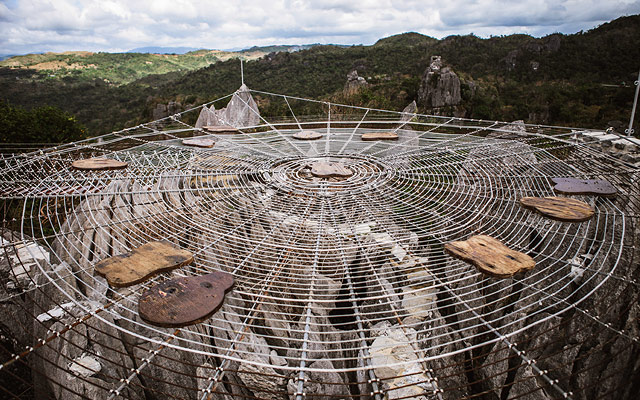
Located in Baras, Rizal, the Masungi Georeserve is characterized by rugged limestone karst peaks, steep slopes and surrounding lush montane rainforests. It contains several caves, including the Yungib ni Ruben, which features stalactite and stalagmite formations, as well as a man-made fountain. A popular attraction in the park is the Sapot, a metallic platform with wooden steps which allows visitors to walk on suspended netting above the karst and get a 360-degree view of the Sierra Madre and Laguna de Bay. The park’s tallest peak, Tatay, also has a viewing deck at its summit. The limestone formations are connected by hanging bridges, rope courses and eco-trails. On one of the hanging bridges, a wooden cable car-like shelter called Patak can be found which serves as a rest stop for visitors. The Duyan, a giant rope hammock spanning a few hundred feet, is one of Masungi’s most photographed rope courses.
Tubbataha Reefs Natural Park
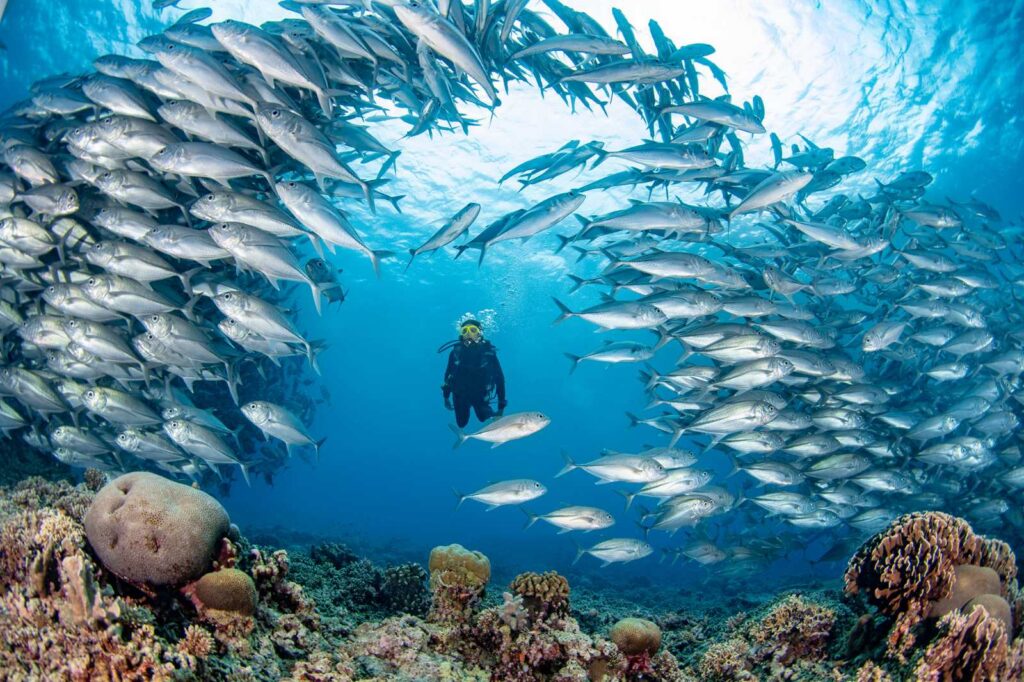
With its stunning underwater landscape made up of vibrant corals and marine life, it is little wonder the Tubbataha Reefs in Cagayancillo, Palawan has been recognized as one of the world’s top diving destinations. The reefs feature 600 species of fish, 360 species of coral, 11 species of sharks, 13 species of dolphins and whales, birds, plus hawksbill and green sea turtles. It was declared a UNESCO World Heritage Site in 1993 due to its “pristine coral reefs” alongside “extensive lagoons and two coral islands”. Because of its isolated location, tourists have to endure a journey that takes approximately 10-12 hours (only accessible from mid-March to mid-June). Nonetheless, being in touch with this magnificent diversity of marine life is worth the travel.
Puerto Princesa Subterranean River National Park
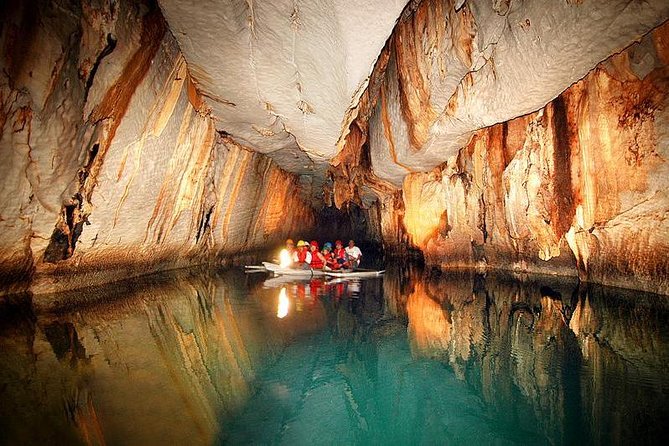
The Puerto Princesa Subterranean River National Park has become one of the most famous tourist destinations in Palawan since its recognition as one of the New 7 Wonders of Nature in 2012. Whether you take a boat or hike to the entrance of the Underground River, a tour of the eight-kilometer waterway (one of the world’s longest navigable river caves) is done aboard a small paddle boat. This tour takes visitors into the cave of glittering stalactites and stalagmites. More than these astounding rocks, the area represents a complex ecosystem, being home to several animals such as crab-eating monkeys and monitor lizards.
Batad
Batad is a tiny village in Banaue, Ifugao famous for its 2,000-year-old rice terraces hand-carved by farmers. Declared a UNESCO World Heritage Site in 1995, it is one of the five clusters of rice terraces of the Cordilleras. Some indigenous locals still practice old rituals of rice planting and harvesting, wear traditional costumes and speak their native language. But communication won’t be a big problem, as guides can understand and speak Filipino and English. The village is also almost devoid of any cellular and internet services, making it a favorite destination for travelers who wish to disconnect and reflect, apart from soaking in all of the majestic surroundings. Getting in and around the area is an adventure though, as visitors are required to trek along steep mountain trails and rocky or muddy terrain. Deep within its mountains is the mighty Tappiya waterfalls, but only the brave dare to take a dip in its super-cold waters.
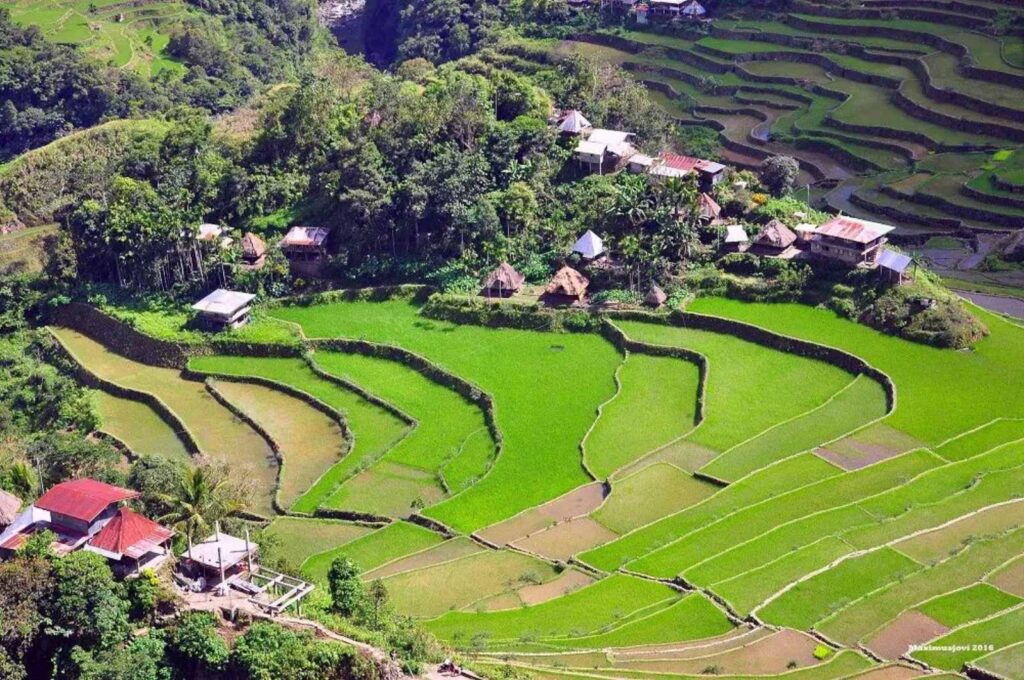
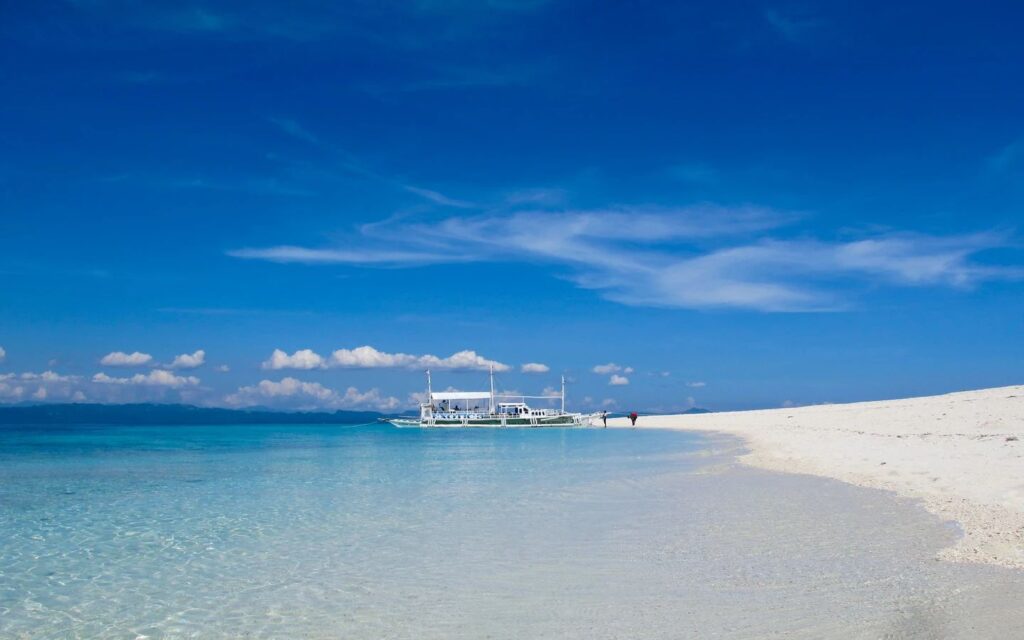
Malapascua Island
While its name means “bad Christmas”, the tiny island of Malapascua in Cebu will bring no humbugs to your vacation cheer. Unspoiled white sand beaches, beautiful coral gardens and a beaming marine life sanctuary have earned Malapascua the title of one of the best diving spots in the Philippines. Take the chance to see thresher sharks, enjoy unlimited scenic views and immerse yourself in a relaxing atmosphere. Be sure to order beer or wine while you watch the sunset.
Cuatro Islas

Nestled in the western part of Leyte is a group of islands bordered by white sand shores and colorful coral gardens – the Cuatro Islas. The group of islands, which literally means “four islands”, showcases a rich and diverse underwater paradise. These are the islands of Apid, Digyo, Himokilan and Mahaba, which all have a specialty of their own. Through proper maintenance of its ecosystem, Cuatro Islas is on its way to becoming a top recreational diving destination, giving tourists the chance to interact with their diverse marine sanctuary.
Biri Larosa Protected Landscape and Seascape
Located in Northern Samar, Biri Larosa Protected Landscape and Seascape is a breathtaking beauty famous for its natural rock formations and scenic views. There are seven gigantic rock formations within the area: Magasang, Magsapad, Macadlaw, Puhunan, Bel-at, Caranas and Pinanahawan. These are said to be the result of underwater tectonic plate movements and the crashing of waves millions of years ago. Adventure junkies will love the saltwater pools and coming face-to-face with diverse wildlife and marine species.
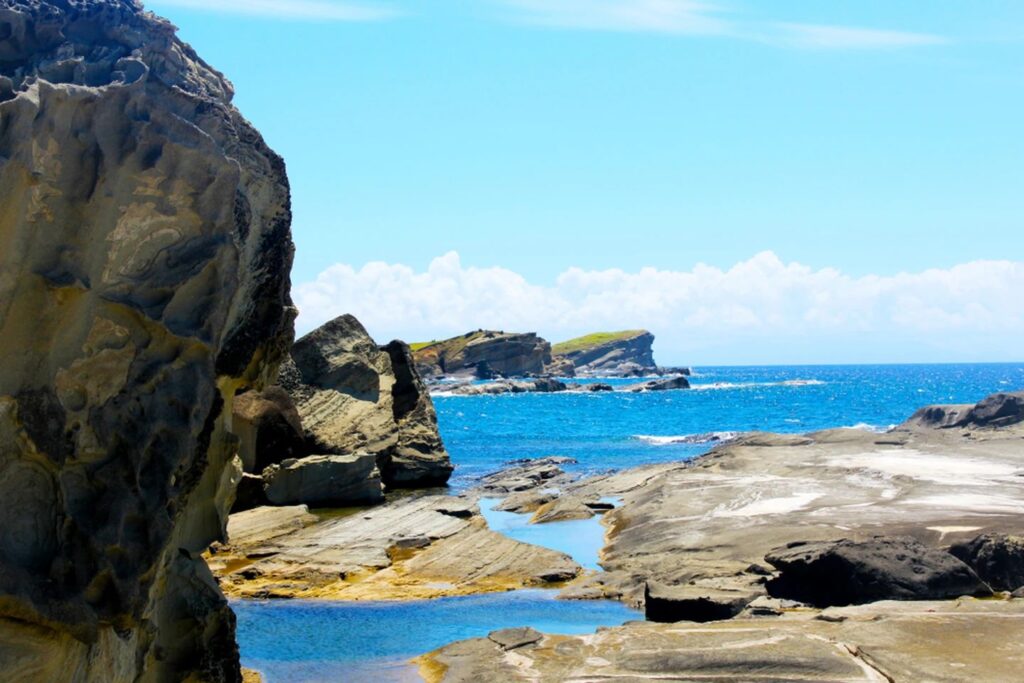
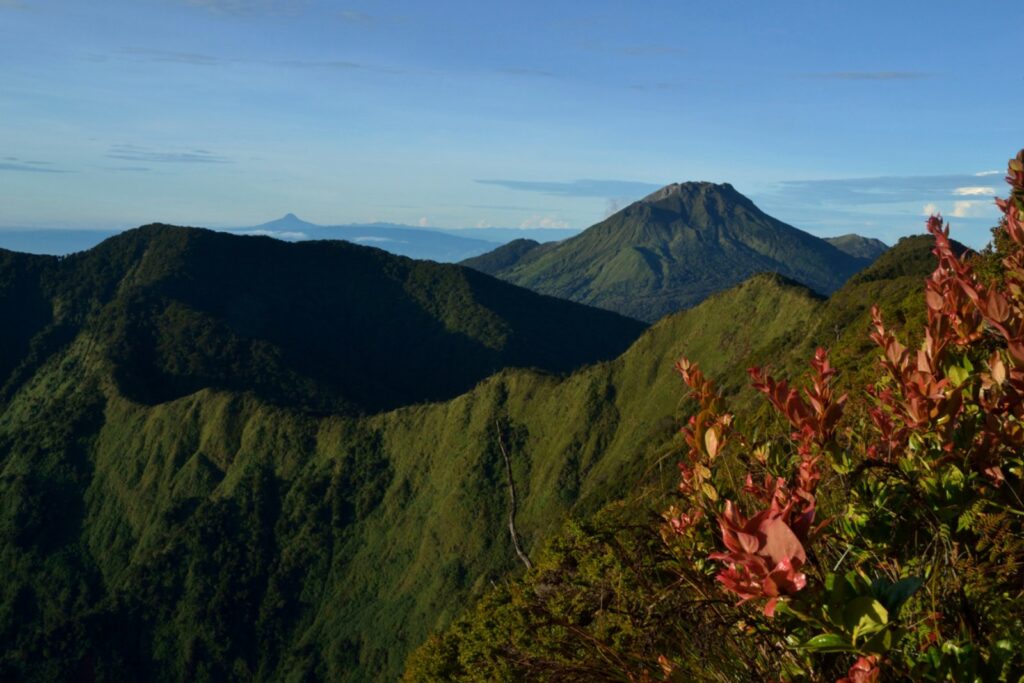
(Credit: mtapoadventures.com)
Mount Apo Natural Park
Mount Apo Natural Park in Digos City, Davao del Sur is one of the country’s most highly-prioritized protected areas and important heritage sites. It primarily serves as a sanctuary for countless wildlife species, including endangered animals such as the Philippine eagle, Philippine deer and over 600 native species. It is also home to two mountains: Mount Talomo and Mount Apo, the country’s highest peak.
Mount Hamiguitan Range Wildlife Sanctuary
The Philippines has six UNESCO World Heritage Sites and one of them can be found in Davao Oriental. Boasting land and sea ecosystems at various elevations, Mount Hamiguitan Range Wildlife Sanctuary is a wonderful example of the adaptability of nature. It’s estimated to have 1,400 different species of plants and animals, including the Philippine tarsier and the world’s smallest dragonfly – scarlet dwarf. Within the sanctuary, you’ll also find the natural wonders of Tinagong Dagat and Twin Falls.
Siargao Island
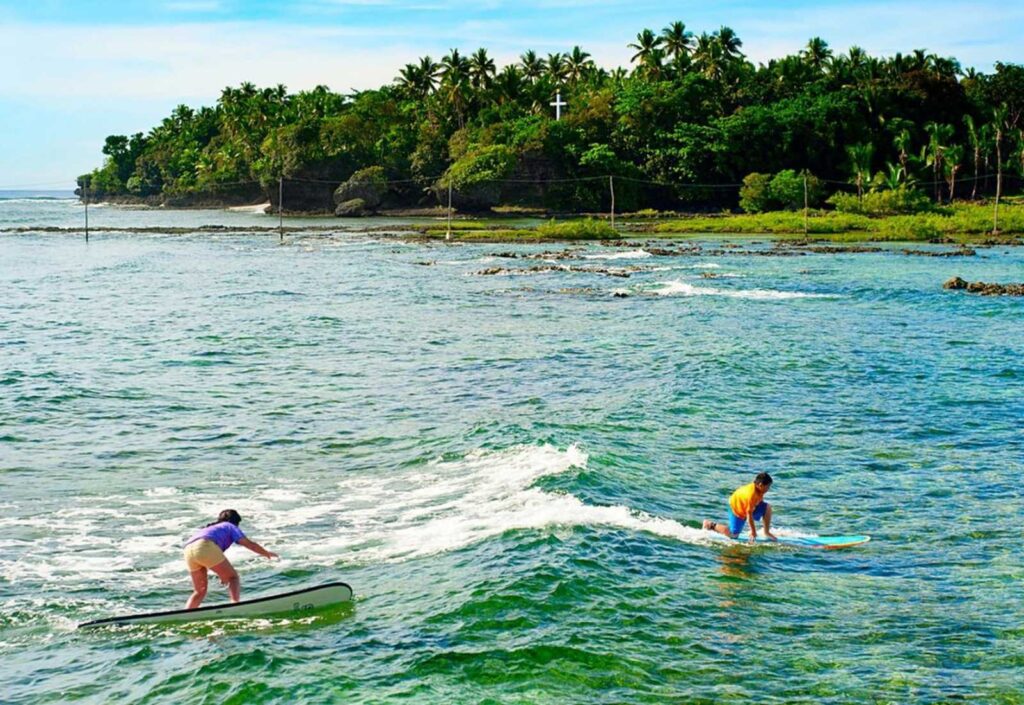
Known as the surfing capital of the Philippines, Siargao Island was voted the Best Island in Asia in the 2021 Conde Nast Travelers Readers Awards. Located on the northeastern coast of Mindanao, this teardrop-shaped island is surrounded by fine white sand shores, exceptional coral reefs and barrelling waves that will test even the most seasoned surfer’s skills. However, the island is not just centered around surfing. You can also go island hopping, jump from the rocks of Magpupungko Rock Pool, explore Tayangban Cave or dine at a variety of world-class restaurants. If you’re lucky, you can catch a charming sunset view at the island’s most popular surf break – Cloud 9.
New Israel Eco Adventure Park
Apart from serving as an entry point to the peak of Mount Apo, the once humble village has become home to the longest zip line in Asia – about 2.3 kilometers. Divided into two parts, the thrilling ride lets you pass through the New Israel community and back. Be observant of your surroundings too, as Philippine long-tailed macaque monkeys freely roam around the area at certain times of the day. Just try not to smuggle the cute little scamps under your jacket on the way out.
Danjugan Island
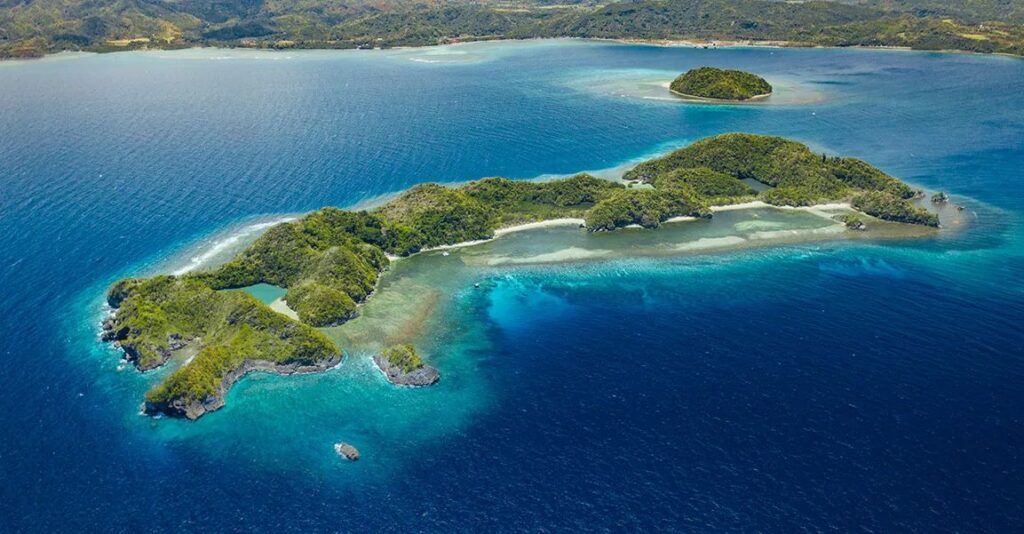
A protected sanctuary in Negros Occidental, the island has five lagoons and limestone forests where many terrestrial and marine wildlife can be found. It’s a research area for conservation researchers and a tourism spot for those who want a quiet getaway in the Visayan region. Activities on Danjugan Island include snorkeling, kayaking, trekking, bird watching, sailing and scuba diving. Guests can have a day tour or overnight stay in the Lagoon Camp or Typhoon Beach.
Sohoton Cove
Often described as “otherworldly”, Sohoton Cove is an idyllic habitat in Bucas Grande, Surigao del Norte. It has 13 inland lakes, three of which are accessible to the public. It is covered by Protected Landscape and Seascape fiat. As such, one can find endemic flora and fauna, such as stingless jellyfish, green sea turtles and other animals such as tarsiers, kalaw (hornbills) and eagles. Boat tours are allowed inside this water jungle maze, where guests can appreciate rich greenery and crystal-clear water. They can also visit the Jellyfish Lagoon or Tojoman Lagoon, where stingless jellyfish surface during mating season.
Batanes
The smallest and northernmost province in the Philippines, Batanes is famous for its rolling hills and rugged coastline. In 2016, it was declared a heritage and ecotourism zone. While developments are still allowed on the island, the priority lies in preserving its national and cultural heritage. Places to see include Mount Carmel Chapel, Marlboro Country (a known pastoral landscape where you can see cows, carabaos and horses), Chawa View Deck, Liveng and Savidug Barrio (site of traditional Ivatan stone houses).
Palaui Island
Located in Santa Ana, Cagayan, Palaui Island Protected Landscape and Seascape is mostly known for its raw beauty. In 2012, it took the 25th spot in CNN’s Best Beaches in the World and rose to the 10th spot the following year. As a national marine reserve, the water surrounding the island supports rich marine life, with undisturbed corals and 20 commercial species of fish. Activities to do here are swimming, snorkeling, skimboarding, game fishing, trekking, camping, picnicking and bird watching.
Lake Sebu
A natural lake in South Cotabato, Lake Sebu covers 354 hectares and has 11 islets. It harbors several protected wildlife species and natural attractions, including three lakes, seven waterfalls and a rainforest. Guests can go on a cultural immersion with the indigenous tribes in the area: T’Boli, Ubo, Tiruray and Manobo. One notable activity to do with the tribes is learning their arts and crafts, including making of t’nalak weaves and brasswares.
Lake Holon
A mountain lake in South Cotabato, Lake Holon is called the Crown Jewel of the South. It’s the ecotourism banner for the T’boli tribe and is part of the ecotourism circuit in the area, along with Bakngeb Cave, Lamhaku Hot Spring and Hidak Falls and Hikong Kemebel.
Pawikan Conservation Center
A sanctuary in Morong, Bataan, the center is dedicated to the rescue, protection and propagation of pawikans (sea turtles). One of its regular activities include patrol of the 6-kilometer beach to protect the hatchlings of sea turtles from predators and fishermen. Tourists go here to help, particularly during February and August when the sea turtles venture to the shore to hatch. They are allowed to volunteer in patrolling or join Adopt a Turtle Program where they can release a baby turtle back to the sea.
Apo Island
A small volcanic island in Dauin, Negros Oriental, Apo Island is mostly known as a world-class diving destination. It is located in the Coral Triangle, an area in the world with the richest marine biodiversity.
Once Islas
This eco-cultural destination in Zamboanga is composed of 11 islands, although only four are currently accessible to the public. The islands are open for day tours. Tourists can swim on the white sand beach on Bisaya-Bisaya Island or take a dip in its natural pool; have lunch at Sirommon Island; and trek at Baung-Baung Island. They can also drop by Buh-Buh Island for a cultural visit to its mosque.
Buhatan River
In 2015, the late environmentalist Gina Lopez organized a clean-up in Buhatan River in Sorsogon and eventually developed this into a tourist-friendly sight wherein visitors can enjoy an hour-long river cruise in a floating cabana. The Buhatan River cruise is operated and managed by the locals of barangay Buhatan. Aside from the cruise, they also offer kayaking and firefly watching. They also serve local Bicolano dishes in the visitor center.
How to be a responsible traveler
While enjoying your trip, you should take measures to protect the environment.
● Say “no” to plastic and carry reusables.
● Avoid food wastage.
● Pack lighter. This translates into fewer vehicles needed to transport travelers and their luggage, resulting in lower fossil fuel consumption.
● Do not print tickets when you don’t have to; use electronic ones instead. This helps save paper.
● Reduce energy use.
● Conserve water.
● Savor meals that feature local ingredients. This means fewer fossil fuels are involved because they didn’t travel far to reach your plate. Buy organic produce or fresh vegetables from farmers.
● Use public transport to limit fuel consumption and carbon emissions. If it’s possible to explore the destination on a bicycle or on foot, nothing could be better. When driving, switch to hybrid cars which reduce pollution or compressed natural gas-enabled vehicles which help lower carbon monoxide levels.
● Never litter.
● Follow rules.
● Go for eco-friendly destinations, accommodations and tour companies.





